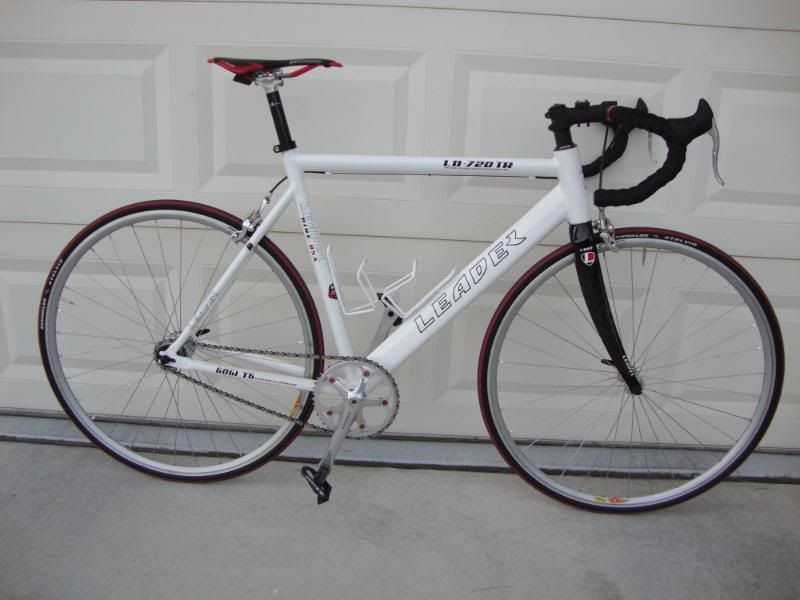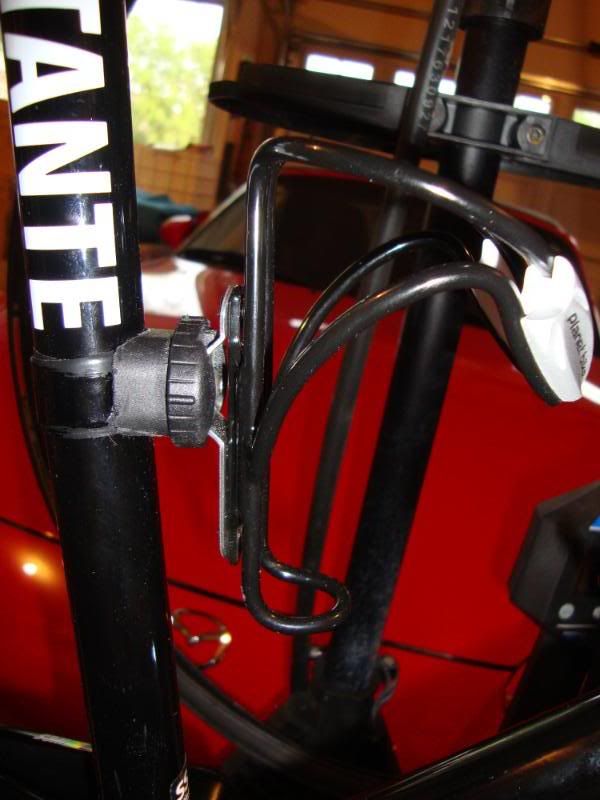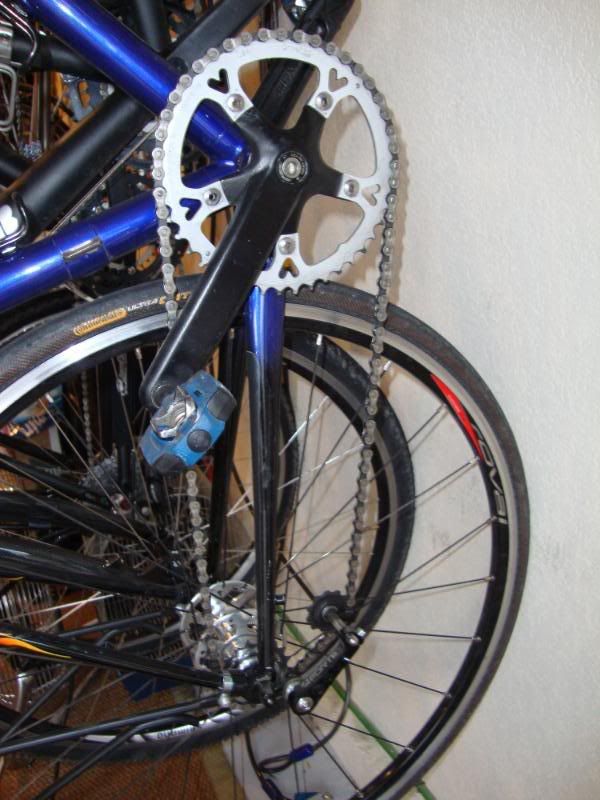
This blog thing has suffered from serious neglect lately, and as a result is atrophying at a rather rapid rate. So, that being the case, I thought I'd inject a little life into this thing by writing about my current cycling passion: single-speed riding. A local bike shop owner who I've done business with in the past got a whole bunch of fixed gear bikes in inventory and was anxious to show me how great he thought they were. "Here" he says, "Take this one out in the parking lot and give it a spin." So, what does a bike enthusiast as myself do with such a suggestion? Why, take the bike out in the parking lot and give it a spin. He also said, in kind of muffled warning sort of way: "Be careful. Mounting a fixed gear is a bit trickier than mounting a regular geared bike." Paying half-attention to his warning, I attempted to mount this bucking beast in true geared-bike fashion. I soon found myself being launched over the bars and careening towards the not-so-soft asphalt. That was it for me, and I said, "no thanks, not for me. I'll stick with a geared bike!" He said, "well, ya know you can flip-flop the hub and ride it single speed." Unconvinced, I ignored his statement and politely put the bike back up on the rack thinking, "nope...not for me." Well, here I am about 2 years later with two single speeds in the garage soon to be joined by a third. I'm not sure what got me into this: boredom with no project to tinker with, or just plain curiosity as to whether or not I'd really like riding with just one gear. After all, it did seem rather odd that anyone with any sense, would want more gears than just one. Well, one day while I was just sitting there in my garage contemplating my navel and drinking a glass of wine (my favorite mind stimulus drink), I thought to myself, "self, I bet I can turn that old Trek 2300 into a single-speed bike." With some net surfing and further sleuthing, I came up with the perfect, not too expensive, morphization. Is that a word? Anyway, I bought a single speed conversion kit from Performance, dug out an old set of wheels, purchased and mounted some of those "old style" brake levers and whoola! A single speed mut is born!



While I've never been too "geeky" about things in general (at least I don't think so), I was curious about what all these guys were talking about when you get a bunch of single-speed and fixed-gear riders together. The inevitable first question one asks when realizing there is a true bond here is: "hey, what gearing are you running on that thing?" The usual response consists of the size of the front chainring followed by the size of the rear sprocket (both are referred to in numbers of teeth). Goes something like this: "I'm runnin' a 48 by 18." "Cool!" is usually the other response, followed by: "yeah, that gives me a perfect 71 gear inches." Now depending how geekinzoid you really wanna get, you would understand perfectly what the last part of that conversation really means. If you are just a bike rider, like I am, you just say "cool" like you really know what 71 gear inches really means. After all, you don't want let anyone know that your geekinzoid factor isn't what it's supposed to be, right? Actually, I was curious what all this meant and found out that there are really three ways to address these various combinations: Gain Ratio, Gear Inches, and Meters...yep, meters. I won't go into too much detail but here, at least, is a definition of gear inches. If you want more details, I highly recommend going to Sheldon Brown's bike site for a little light reading. I'll paraphrase about gear inches from him here:
Gear Inches: The simplest system in common use is the "gear inch" system. It is very easy to calculate: the diameter of the drive wheel, times the size of the front sprocket divided by the size of the rear sprocket. This gives a convenient two- or three-digit number. The examples, 46 by 16 and 52 by 12 are all around 74-75 inches. The lowest gear on most mountain bikes is around 22-26 inches.
Surly, manufacturers of Single Speed/Fixed frames also has a good article on the various nuances of single speed/fixed gear riding here.


Now, what do all these numbers really mean. Well, I translate them into "feel." Yep, feel. Basically, the smaller numbers make it easier to pedal and the higher numbers make it harder. What is the "nirvana" number, you ask? Well, it depends. It depends on what is comfortable for you. For me, it is any combination of gears that gives me anywhere from 68 to 72 gear inches. So, guess what? The more bikes you have, the more combinations you have available! And that...makes me happy. For example, I use the old Trek 2300 for commuting and it also weighs in a bit heavier than the other two bikes. Besides that, I load it down with "stuff." So, I run a 44 by 17 on that one, translating into 68 gear inches. On the Leader bike, I'm running 46 by 17 giving me a comfortable 71.1 gear inches. I can spin the Leader out at about 28 mph. On the new Single Speed, I'm gonna run 48 by 18 as a trial. That gives me about 70.1 gear inches and I think that combo will be good for Centuries or Double Centuries that require a bit of climbing.
So, am I hooked on Single Speed riding? Most assuredly yes! Will I ever go fixed, Nope. I like coasting down hills too much. Single speed is really the "bomb." So, come on over to the dark side and join us!